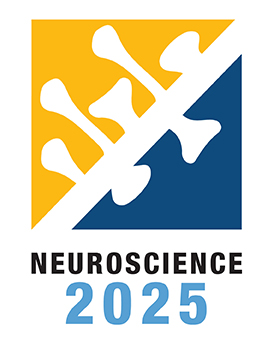Call for Abstracts
Abstract Presenter Next Steps
Access your submission using the button above to print a receipt for the $170 abstract submission fee. Log in to your SfN account to print a receipt for membership fees.
Review next steps to prepare for the meeting.
- Register for the meeting. Remember, payment of the $170 abstract submission fee does not include registration for the annual meeting. Abstract presenters must register to present at the annual meeting.
- Watch on demand the "How to Make and Present a Poster for Neuroscience 2025" webinar.
- Review abstract presentation resources.
- Get ready to upload your virtual poster.
- Request a visa letter of invitation.
Join our mailing list to receive annual meeting updates.
Justify Your Abstract Presentation
Use this letter to make the case for essential travel to attend and present an abstract at Neuroscience 2025 in San Diego.
Download Justification Letter TemplateAbstract Information
-
Webinars
Watch on demand the How to Organize a Nanosymposium webinar from April 21.
Watch on demand the How to Submit an Impactful Abstract webinar from May 20.
Watch on demand the How to Make and Present a Poster for Neuroscience 2025 webinar from October 7.
-
Scientific Rigor in Annual Meeting Presentations
Accepted abstract presenters will be expected to transparently report a study’s experimental design and analytical methods in their poster, Theme K poster, nanosymposium, or late-breaking poster presentation at the annual meeting. Efforts to ensure scientific rigor include blinding, statistics, sample sizes, and replication. Error bars should be defined. Biological variables such as species, sex, age, strain, or cell line should be noted in the presentation, if applicable.
-
Notice of Abstract Acceptance Status
Communications regarding abstracts are sent to presenting authors only. Other co-authors should ask their abstract's presenting author for information regarding their abstract. Presenting authors were notified about their abstract's acceptance status in early August.
Presenting authors of late-breaking abstracts will be notified about their abstract's acceptance status at the end of September.
Advance registration for members opened July 16. Abstract presenters must register in order to present at the annual meeting.
-
Abstract Withdrawal
Requests to withdraw abstracts may be submitted via the OASIS Presenter Portal by the presenting author. Click the "Access Submission" button at the top of the page to access your OASIS Presenter Portal. Withdrawing your abstract indicates that you do not want to have it included in the annual meeting program.
Presenters may also mark their abstract as "Unable to Attend" via the Presenter Portal. This option notes for attendees that the presenter will be present at their poster neither virtually nor in person.
Updates to meeting participation can also be made via the Presenter Portal. Presenters can indicate whether they plan to present in person only, virtually only, or virtually and in person. The deadline for switching from in person only to virtually only is September 25.
Abstract Submission Policies
Rules for Abstract Submission
Read over the rules for submitting an abstract to Neuroscience 2025.
Abstract Licensing Agreement
Review the terms of use agreed to when submitting an abstract for Neuroscience 2025.
Embargo Policy
Review SfN's embargo policy.






















